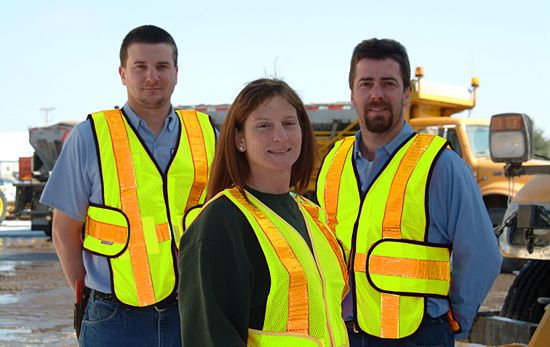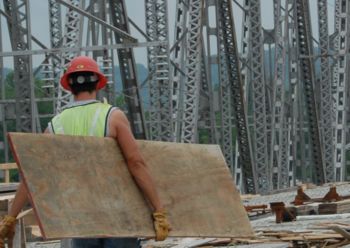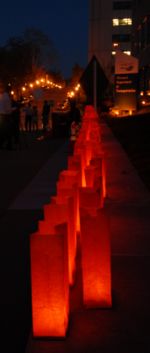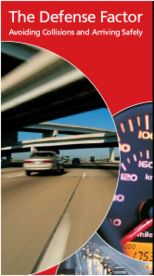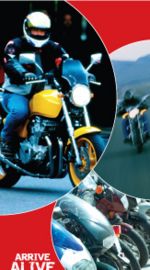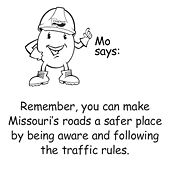Difference between revisions of "Category:132 Safety"
m (added safety video, TMA Safety Points) |
m (expanded links to safety policies) |
||
| Line 1: | Line 1: | ||
| − | [[image:132 Safety.jpg|right| | + | [[image:132 Safety.jpg|right|550px]] |
| − | {|style="padding: 0.3em; margin-right:10px; border:2px solid #a9a9a9; text-align:center; font-size: 95%; background:#f5f5f5" width=" | + | {|style="padding: 0.3em; margin-right:10px; border:2px solid #a9a9a9; text-align:center; font-size: 95%; background:#f5f5f5" width="270px" align="left" |
|- | |- | ||
| − | |[[image:safety begins with me.jpg|165px|center]] | + | |colspan="2"| [[image:safety begins with me.jpg|165px|center]] |
|- | |- | ||
| − | |''' | + | |colspan="2"|'''Safety Policies and Guidance''' |
|- | |- | ||
| − | |[http:// | + | |colspan="2"|[http://www.phmsa.dot.gov/staticfiles/PHMSA/DownloadableFiles/Files/Hazmat/ERG2012.pdf 2012 USDOT Emergency Response Guide] |
|- | |- | ||
| − | |[http:// | + | |colspan="2"|[http://sharepoint/safety/Lists/OpSafeReview3/Item/newifs.aspx?List=b6899993%2Dc0c3%2D425f%2Db854%2D5f331361d5ec&RootFolder=&Web=257651f1%2Dd6a4%2D4493%2D9658%2D202b6e4fe24f Operations Safety Review Form] |
|- | |- | ||
| − | |[ | + | |colspan="2"|[http://sharepoint/safety/csp/SitePages/MSDS.aspx MSDS] |
|- | |- | ||
| − | | | + | |colspan="2"|Personal Protective Equipment: |
|- | |- | ||
| − | |[http:// | + | | ||[http://lnapp1/RI/RIManual.NSF/2cfd1a8d7c4213d7862562d900795ea7/a24248893733e8558625786500594b9d?OpenDocument Class II and III Safety Apparel] |
|- | |- | ||
| − | | | + | | ||[http://lnapp1/RI/RIManual.NSF/2cfd1a8d7c4213d7862562d900795ea7/3c16d9b4e7d98e0f8625744f00478355?OpenDocument Fall Protection] |
|- | |- | ||
| − | |[http:// | + | | ||[http://lnapp1/RI/RIManual.NSF/2cfd1a8d7c4213d7862562d900795ea7/e272cbae61e6847286257b040052aae4?OpenDocument Head and Eye Safety] |
|- | |- | ||
| − | |[http:// | + | | ||[http://lnapp1/RI/RIManual.NSF/2cfd1a8d7c4213d7862562d900795ea7/52170c551e090c6886257233006460c6?OpenDocument Prescripton Safety Eyewear] |
|- | |- | ||
| − | |[ | + | | ||[http://lnapp1/RI/RIManual.NSF/2cfd1a8d7c4213d7862562d900795ea7/3a30c1ac262a80ce862578b500587bb7?OpenDocument Respiratory Protection] |
|- | |- | ||
| − | |[ | + | | ||[http://lnapp1/RI/RIManual.NSF/2cfd1a8d7c4213d7862562d900795ea7/ace307eecb116567862577b200472421?OpenDocument Safety Footwear] |
|- | |- | ||
| − | | | + | |colspan="2"|Temporary Traffic Control |
|- | |- | ||
| − | |[ | + | | ||[http://sharepoint/Districts/D7/maint/Lists/Technical%20WZ%20Form/Item/newifs.aspx?List=738633d1-09d4-4863-92f8-3baea2c71e08&Web=8e2f89fd-9ab7-442a-8824-8079f2fcae12 Technical Work Zone Form] |
|- | |- | ||
| − | |[http://wwwi/intranet/ri/safety_emphasis.htm MoDOT's Safety Emphasis] | + | | ||[http://www.modot.org/workzones/documents/WorkZoneInspectionForm.pdf Work Zone Inspection Forms] |
| + | |- | ||
| + | | ||[[Work Zone Safety and Mobility Policy Resources|Work Zone Safety and Mobility Policy Resources]] | ||
| + | |- | ||
| + | | ||[http://www.modot.org/workzones/Comments.htm Work Zone Survey] | ||
| + | |- | ||
| + | | ||[[616.19 Quality Standards for Temporary Traffic Control Devices|Quality Standards for Temporary Traffic Control Devices]] | ||
| + | |- | ||
| + | | ||[http://tmshome/TMS/TMS.html TMS] | ||
| + | |- | ||
| + | |colspan="2"|'''[http://wwwi/intranet/SafetyVideos.htm Safety Videos]''' | ||
| + | |- | ||
| + | |colspan="2"|[http://wwwi/intranet/DevelopingSafetyCulture_3.wmv Developing MoDOT's Safety Culture] | ||
| + | |- | ||
| + | |colspan="2"|[http://epg.modot.mo.gov/documents/132_Mowing_Safety.wmv Mowing Safety] | ||
| + | |- | ||
| + | |colspan="2"|[[media:132 Asphalt Operations.wmv|Asphalt Operations]] | ||
| + | |- | ||
| + | |colspan="2"|[http://www.youtube.com/user/modotvideo Safety is My Story] | ||
| + | |- | ||
| + | |colspan="2"|[http://wwwi/intranet/TMASafety_WMV_widescreen.wmv TMA Safety Points] | ||
| + | |- | ||
| + | |colspan="2"|'''Additional Information''' | ||
| + | |- | ||
| + | |colspan="2"|[http://wwwi/intranet/ri/documents/06-2012.pdf Heat Safety] | ||
| + | |- | ||
| + | |colspan="2"|[http://wwwi/intranet/hs/BikeandPed.htm Bike and Pedestrian Safety] | ||
| + | |- | ||
| + | |colspan="2"|[[media:132 Hand Protection.pdf|Hand Protection]] | ||
| + | |- | ||
| + | |colspan="2"|[[media:132 Head Eye.pdf|Head and Eye/Face Protection]] | ||
| + | |- | ||
| + | |colspan="2"|[[media:132 Hearing Protection.pdf|Hearing Protection]] | ||
| + | |- | ||
| + | |colspan="2"|[[:Category:948 Incident Response Plan and Emergency Response Management|Incident Response Plan and Emergency Response Management]] | ||
| + | |- | ||
| + | |colspan="2"|[http://wwwi/intranet/ri/safety_emphasis.htm MoDOT's Safety Emphasis] | ||
|} | |} | ||
Revision as of 06:40, 4 October 2013
Safety is one of MoDOT’s values. People often first think of work zones when they think of safety, but MoDOT addresses safety toward many audiences.
Missouri's Blueprint to Arrive Alive is an umbrella guide to increase coordination, communication and cooperation among state and local agencies, law enforcement, planning organizations, non-profit organizations and other safety advocates throughout the state.
Many hazards exist on a construction project and all personnel must be constantly alert to avoid injury. This article provides construction inspection guidelines for safety precautions.
Highway Safety Plan and Performance Plan describes how Missouri’s Section 402 State and Community Highway Safety Program grant will be used to promote highway safety within our state.
132.1 Material Inspection for Safety
MoDOT personnel are to practice the rules of safety at all times. Copies of the ”Safety Policies, Rules & Regulations Employee Handbook” are available in district offices, the Central Office and the Risk Management area of the intranet at http://lnapp1/RI/RIManual.NSF/SHToC?OpenView. These rules must be read and practiced. In addition to the information in the Handbook, the following paragraphs are more specific to situations that may be encountered in the process of inspecting and sampling materials.
Hard hats or other protective devices should be worn when conditions warrant and shall be worn when required by MoDOT policy. Loose clothes should not be worn around moving machinery. Extreme care must be taken when moving drilling equipment near power lines. In order to obtain a sample, it is sometimes necessary for the person taking the sample to be in a hazardous location and extreme caution should be exercised. Frequently, samples are taken in the vicinity of heavy equipment and the person taking the sample must know the equipment's operation for proper protection. The operator of the equipment should always be told when sampling is being started and when it is finished.
Sec 106 states "Facilities shall be furnished for the procurement of samples, performance of the tests and for the protection of testing equipment and supplies when tests are made at the source of production." Sec 106 further states, "The Commission will refuse to provide plant inspection at sources where adequate safety measures are not provided and maintained." Unsafe conditions shall be brought to the attention of the producer. If these conditions are not immediately corrected, the producer is to be notified in writing over the District Engineer's signature, of the specific unsafe condition and informed that plant inspection will not be provided until the condition has been corrected.
Some specific items to consider when sampling are:
- (a) Make sure that ladders and scaffolding are adequate and secure.
- (b) Keep away from unguarded moving parts.
- (c) Allow no smoking or fire in the vicinity when handling volatiles.
- (d) When sampling at asphalt plants, handle asphalt mixes carefully because of their high temperatures.
- (e) When sampling from chutes, be careful that the weight of the material hitting the sample container does not cause a loss of balance.
- (f) Goggles should be worn if there is danger of injury to the eye during sampling and/or testing. Particular care should be utilized when handling asphalt, cement, solvents and acids.
- (g) Use respirators if an excessive amount of dust or fumes is present.
- (h) Protective headgear shall be worn at all locations where the contractor or producer requires their employees to wear protective headgear.
The inspector shall at all times observe the safety code and rules in force at the plant or location where the inspection is to be performed. The most helpful safety rule to follow is common sense. No written instructions can cover all conditions that will be encountered. Therefore, safety is dependent to a great extent on personal care.
Articles in "132 Safety"
The following 2 pages are in this category, out of 2 total.
